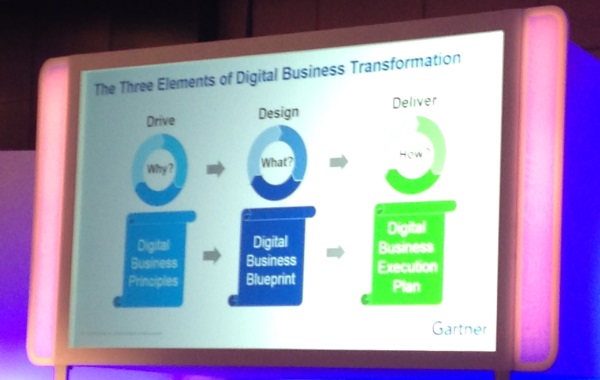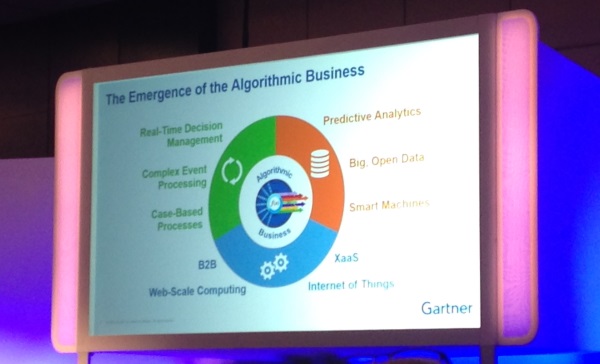I’m coming back from the Gartner AADI Summit in London. The event took place downtown at the Park Plaza Westminster Bridge hotel.
- Park Plaza Westminster Hotel
- Hotel lobby
- Hotel lounge
Gartner AADI Summit in London
This was a two-day event that gathered between 600 and 700 people. AADI stands for “Application Architecture, Development and Integration.” This is the major European event for IT integration best practices.
Times change
The opening keynote was called “The DigiFlip—Two Universes, Two Sets of Rules for Success in Digital Business.” Interesting facts were presented. Times change, everybody is aware of that and we should expect big changes in IT in the upcoming year:
“The life expectancy of a Fortune 500 company today is less than 15 years.”
“2/3 of job positions in IT departments today don’t exist in the modern lean IT department.”
Steps towards digital business
When it comes to Digital Business Transformation, there are three elements to take into consideration:
•Why do I start a Digital Business Initiative?
•What should I do?
•How do I do it?
Algorithmic business
We also assist in the emergence of algorithmic business. This consists of embedding intelligence in the APIs by developing custom policies and mathematical algorithms that render customized content based on a location, customer profile, consumption history … The goal of algorithmic business is to create a better customer experience by providing custom content and services.
Bi-modal IT
I liked the way Gartner introduced bi-modal IT:
•Mode 1: Predictable/Samourai discipline
◦High ceremony, exists in Hierarchy
◦Always follows the rules, uses standard tools
◦Predictable, ultrareliable, takes the orders and delivers
◦Somewhat inflexible
•Mode 2: Exploratory/Ninja agility out of established rules.
◦Low ceremony, exists outside the hierarchy
◦No fixed rules, adaptive
◦Innovates to achieve results, failing and learning continuously
◦Somewhat disruptive
Kamron Abtahi from Dun & Bradstreet was very kind to accept our invitation to the event and I was very pleased to introduce his presentation. The room was full and Kamron made a great impression with a very clear explanation of their challenges and how the Axway API Management solution helped them multiply by three the revenue of their D&B Direct Service. We had the second-best attendance with our own session of 87 attendees and we had a number of visitors come to the stand following our session with questions and wanting to learn more.
Axway was Platinum Sponsor of the event. Booth visitors could win an amazing BB8 robot. For dinner, every exhibitor set up a buffet in front of their booth and this was a great show with animations. For example, a Stormtrooper was patrolling in front of Axway booth to make sure the delicious pasta buffet could not be attacked. I also liked the Oracle vodka bar made of an amazing ice tower to cool the vodka when crossing the tower through a pipe.
Barclays customer case study
Barclays presented how they implement their API Management project over the past three years. This was an excellent presentation that was giving facts and explaining the difficulties they faced in promoting the digital business transformation internally and how they succeeded. Finding a business sponsor was the key for success at Barclays and I believe that should be the main objective of every IT team implementing an API Management project because the business sponsor is able to explain the business value to the Executive Committee and get budget.
I like the expression “You need to give a little to get a lot”: by exposing their services, banks can, of course, be disintermediated but they will at the same time access many new opportunities they were unable to embrace before (e.g.: let their customers pay a friend directly on Facebook without leaving the social network).
Barclays Bank APIs Banking APIs are inevitable “What is Barclays doing”—external.
What is Barclays doing? Internal lessons learned.
Learn all about creating a competitive edge with API solutions.





